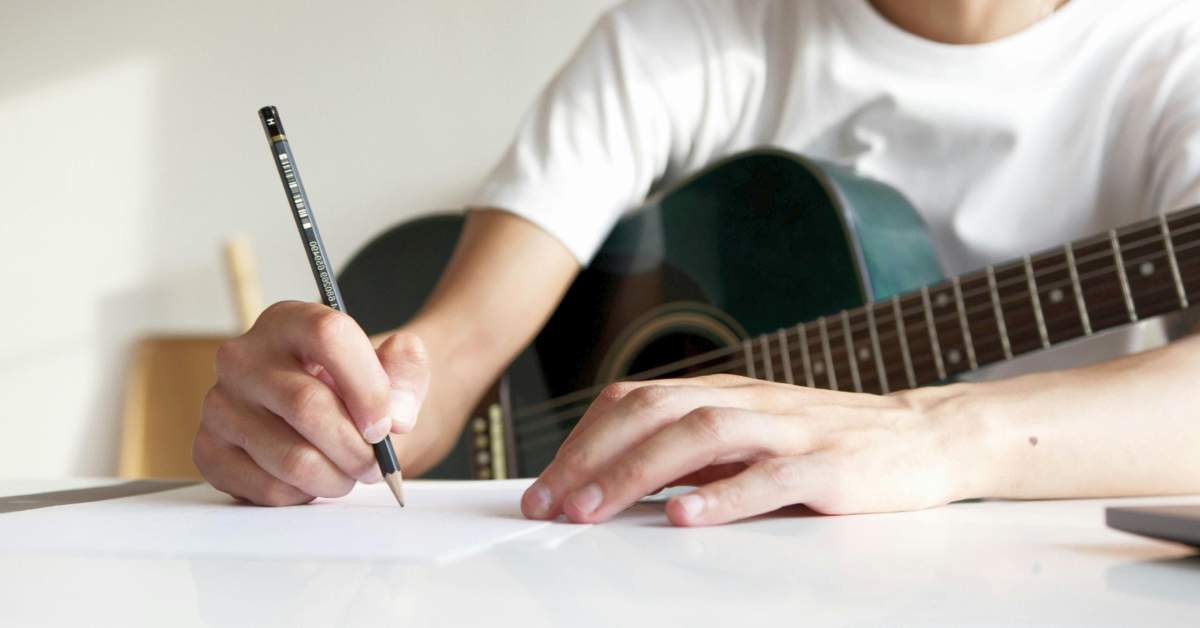If you are looking to transcribe music that is written for the guitar, here are the steps you can take.
Have you ever tried to go somewhere you've never been before without looking at a map or GPS? It's 100x harder if not impossible to pull something like that off.
Getting to your destination without a map is like learning a song without any written transcription or tabs. Yet many guitarists learn everything by ear without ever looking at a transcription, and I think that's deliberately choosing "hard mode".
Frankly, I'm not sure how guitarists who learn things by ear manage to do it for anything complex.
If you want to learn a song for guitar quickly, creating a decent guitar transcription is the first step to getting that done. I'll share with youhere the steps that I take to transcribe music that's written for guitar and create epic tabs.
1. Identify The Song Sections
First, we want to find out what kind of beast we're dealing with here. Is the song a simple loop, or does it have multiple sections, including modulations?
For the first step, you'll want to listen to the entire song carefully and identify the structure of the whole piece. This includes identifying verses, choruses, bridges, and other sections, which often have distinct musical characteristics and functions within the song. Don't skip any parts or assume that the entire song resembles the beginning!

Another reason why you want to identify the verse and chorus right off the bat is that these sections will recur frequently in the song. By already having transcribed those sections, you'll save yourself some time down the road by not having to start over from nothing.
During your outline, you will also identify the meter and time signature, and note if this changes anywhere in the song.
2. Transcribe The Melody
If you're creating an arrangement of a song with voice, you may be in luck, as the vocal part is likely already available. Otherwise, to transcribe a melody, you first need to listen to the song carefully, focusing on the upper line that carries the melody. If it's a well-known song, you may already have tabs for this melody which you can use, like we covered earlier.
Make sure the tabs are in the correct key; we'll talk about that later.
If you have trouble identifying the notes right off the bat, try to play along with the melody by ear. Start by identifying the beginning note of each phrase and then determine the intervals between successive notes. It's helpful to break the melody into smaller phrases or segments to make it more manageable.

If you're transcribing by ear, be prepared to listen to small sections of the song repeatedly to accurately capture the melody. Also, use an app to slow down the music, especially if it's faster. We will also be using an app to transpose the music in special situations.
I like to start my transcription using standard notation, because I can jot down the notes very quickly on a sheet of paper. Once that's done, I'll move everything over into MuseScore, a free software used to write music.
This software will automatically create guitar tablature, which I usually have to correct in the last step of this process.
3. Transcribe the bass line
Next, you will go back over the melody that you just transcribed and identify the bass notes. While you are doing this, you can also note the chord or the harmony that occurs on the beat.
Document the bass line using standard musical notation or tablature. Don't worry about adding any ornamentation; we'll do that later.
After completing this step I'll usually enter everything into MuseScore, a music notation software. If I'm working with someone else's transcription, I usually won't write anything down by hand but instead do everything inside the app.
4. Add In The Harmony
Now it's time to fill in the notes between the melody and the bass. You can also review your work to ensure accuracy and make any necessary adjustments to the bass or the melody. Pay attention to the rhythm and make sure your notes line up correctly with the meter.
At this point you can also note the correct fingerings. If there are some notes which are clearly open strings or played in a different position, you can correct the guitar tablature.
Transcribing Guitar Music With a Capo
Sometimes, you will need to transcribe guitar music where the guitarists uses a capo, usually because the music is in a key that is difficult to play on the guitar (in other words, you can use a capo to get rid of barre chords). If you have trouble playing barre chords, my online fingerstyle guitar course Play Fingerstyle Guitar Now! has an in-depth module showing you my best tips on getting barre chords to sound good.
Using a capo means you can transpose an arrangement into an easier key to play on the guitar. However this can make it harder for us to transcribe the music, because the guitar will sound differently.
How To Transcribe Guitar Music With a Capo
Here are the steps to transcribe fingerstyle guitar music with a capo:
- Determine which fret the capo is placed on
- Use a media player to transpose the music down the appropriate number of semitones
- Create your guitar transcription in normal tuning
By following these steps, you will be able to quickly create or transcribe fingerstyle guitar arrangements with a guitar capo.
How To Transpose A Fingerstyle Song Using an App
You may be looking to play a fingerstyle arrangement that already uses a guitar capo. In this case, I'll show you how you can transpose this arrangement to C major for easier transcription.
Once you know on which fret the capo is placed, you can use the transposition or pitch modification functions of the media player to bring your arrangement down into normal tuning.
In MPV video player, you can use the "rubber band" to transpose the music by a certain number of units called cents. This chart will show you the relationship between cents and semitones for transposing music with a capo.
Transposition Chart For MPV Media Player
| Semitones Down | Cents value |
|---|---|
| 1 | 0.9438743126816935 |
| 2 | 0.8908987181403393 |
| 3 | 0.8396078054371148 |
| 4 | 0.7900137734439613 |
| 5 | 0.7420635105153656 |
| 6 | 0.6957222550505588 |
| 7 | 0.6510075918168027 |
| 8 | 0.6079194109207544 |
| 9 | 0.5663978323691282 |
| 10 | 0.5264045494833026 |
| 11 | 0.4879095812018027 |
| 12 | 0.4508845152426485 |
For instance, let's say our guitarist is playing music with the capo on the third fret. I want to bring the music down so that the guitarist is playing with no capo.
I need to bring the music down 1½ steps, or three semitones, to hear it as if there were no capo. After locating the corresponding cents value in the table above, I call the media player with this command:
mpv.exe --af=rubberband=pitch-scale=0.8396078054371148 my_media_file
Let's say a song you want to learn is in F sharp major. I prefer to transpose a melody down to C Major with a media player and work out the melody in a key that has no sharps or flats.
I therefore need to bring the music down by 6 semitones - look up the value in the chart to convert that to cents.
If you would like more help in creating your very own fingerstyle guitar arrangement, there is an entire section in my course Play Fingerstyle Guitar Now! which shows you how to create a fingerstyle guitar arrangement.


